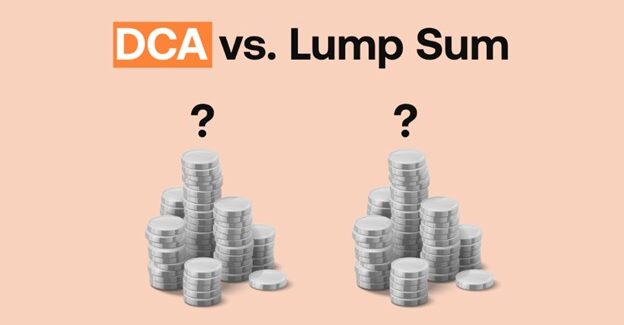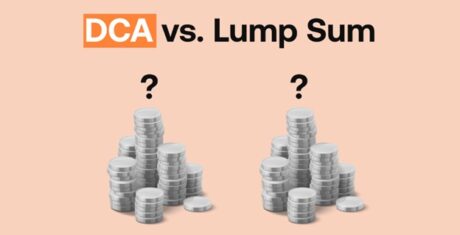Taxation reporting rules for cryptocurrency held inside retirement accounts are different from other cryptocurrency transactions. Cryptocurrency transactions are taxable by law. Investors typically need to report capital gains and losses realized from their cryptocurrency holdings. The Internal Revenue Service (IRS) also requires taxpayers to report income earned from digital assets.
Fortunately, those buying cryptocurrency within a retirement account can access tax advantages, including avoiding capital gains taxes entirely. As with other types of retirement accounts, crypto investors pay income taxes either before contributing, or upon distribution at retirement age. BitcoinIRA has simplified cryptocurrency taxes with a detailed guide on how digital assets are taxed, the forms required, and how crypto is reported on tax returns.
Why It’s Important to Report Cryptocurrency Retirement Accounts on Taxes
It’s important to report cryptocurrency account activity to the IRS because it’s required by law. Generally, the IRS considers cryptocurrency to be property, and it is taxed as such. Owning cryptocurrency in a retirement account, however, allows investors to minimize taxes on profits that would otherwise be subject to capital gains tax.
After selling cryptocurrencies, you’d typically need to report the capital gains or losses on your tax return. By investing within a retirement account, you instead only need to report income taxes (or already used dollars), a significant advantage. In 2023 the IRA contribution limits will increase, allowing you to save even more. Let’s dig deeper into the tax benefits.
How Cryptocurrency Retirement Accounts are Taxed
Profits realized from assets held in retirement accounts are typically taxed either as income before you invest, or at the time of retirement and distribution, depending on whether you choose a Roth IRA or a Traditional IRA.
For Traditional IRAs, your contribution may be tax deductible. The deductible amount is determined by your modified adjusted gross income (MAGI). Whether or not you also have a retirement plan provided by your employer also plays a role.
For Roth IRAs, your contribution limit is affected by your MAGI, as computed for Roth IRA purposes.
Traditional IRA Tax Deduction Limits
The tables below outline deduction limits and the effect of MAGI on deductions for 2023. If you are covered by a retirement plan at work, use this table to determine if your MAGI affects the amount of your deduction.
[table id=1 /]
If you’re not covered by a retirement plan at work, use the below table to determine if your modified AGI affects the amount of your deduction.
[table id=2 /]
Roth IRA Contribution Limits
Roth IRAs also have contribution limits potentially affected by MAGI. The table below shows whether your contribution to a Roth IRA is affected by the amount of your MAGI as computed for Roth IRA purposes. Use this table to determine if your MAGI affects your potential maximum contribution totals.
[table id=3 /]
What Forms Do I Need for Crypto Retirement Account Taxes?
Depending on the type of cryptocurrency transactions that occur in your retirement account, you’ll need the appropriate forms for submitting your taxes.
Form 5498
IRS Form 5498 is used to report your annual contributions, rollovers, conversions, recharacterizations, and year-end fair market values for Traditional, SEP, SIMPLE, Roth, and Inherited IRAs. It also reports the amount of your Required Minimum Distribution that you must take, if applicable.
Investors can expect to receive form 5498, which will reflect their IRA fair market value as well as any contributions the preceding tax year. Your IRA custodian will send a copy of the form to you, as well as to the IRS. This year, forms are due to the IRS by May 31st.
Form 1099-R
IRS Form 1099-R is used to report distributions from your retirement accounts, including but not limited to 401(k)s and IRAs. If you received a distribution from your retirement plan for more than $10, you can expect to receive this form.
Form 1099-R also tracks rollovers from one IRA custodian to another, as well as any early distributions, which typically result in a 10% additional tax if taken before the retirement age of 59 ½. Exceptions may include disability, death, an IRS levy, or medical expenses exceeding 7.5% of AGI.
How to Report Cryptocurrency on Tax Returns
Completing cryptocurrency tax returns is achieved with three steps.
Step 1: Track and Review the Transactions in Your Retirement Account
Be sure to track and understand the performance of the assets in your retirement accounts. When your custodian mails you tax forms, check them thoroughly and make sure the information is correct. Remember, in retirement accounts taxes are owed either on distributions or contributions depending on the account type, not on capital gains.
You can determine gains or losses of each transaction by calculating the difference between the cost of the asset and the value at which it was sold. However, this is only for your own tracking, not tax purposes.
Step 2: Confirm You Received the Correct Tax Forms
As mentioned, Form 5498 and Form 1099-R are the documents you can expect to receive from your custodian, who also reports them to the IRS. The former is used mainly to report contributions and the year-end fair market value of the account, while the latter primarily reports distributions. Typically, taxes are owed on distributions from Traditional and other IRA types, because the contributions are pre-tax, and thus tax is paid upon receiving funds at retirement age. For Roth IRAs, taxes are paid upfront, as post-tax income is used to contribute.
Step 3: Finalize Your Tax Forms
If the forms you received from your retirement account custodian look correct, then you are all set. Simply use the forms to complete your tax return. If you identify errors or have questions, be sure to contact your custodian in advance of the tax deadline to make sure any irregularities are addressed and corrected.
Make Crypto Tax Filing Simple for Retirement Accounts
Filing your crypto taxes isn’t intimidating when you know which forms to verify and the process to complete your return. Use the steps in this guide to stay on top of your crypto taxes and comply with IRS rules.
Q: How do I report taxes on crypto in retirement accounts?
A: Your retirement account custodian will send you the appropriate forms based on your contributions, distributions, and plan type. These forms will also be reported to the IRS concurrently. Then, you can use the forms to prepare your tax return.
Q: Do I need to complete and send any forms myself?
A: You do not need to complete the forms yourself or send them to the IRS. Simply review the forms received from your IRA provider and verify that the information is correct. Also confirm that the correct forms were received (Form 5498, Form 1099-R, or both) based on your account activity for the year. If there are any issues, contact your custodian. When you submit your tax return, make sure you note any amounts listed in the forms.
Q: What happens if I don’t report my crypto on taxes?
A: Not reporting your crypto taxes would result in incurring interest, penalties and possibly being criminally charged. However, this process is simple for those holding crypto in retirement accounts, as your custodian will send your tax forms to both you and the IRS. You will simply report the amounts listed in the forms on your tax return.









 3,500+ 5-Star Reviews
3,500+ 5-Star Reviews